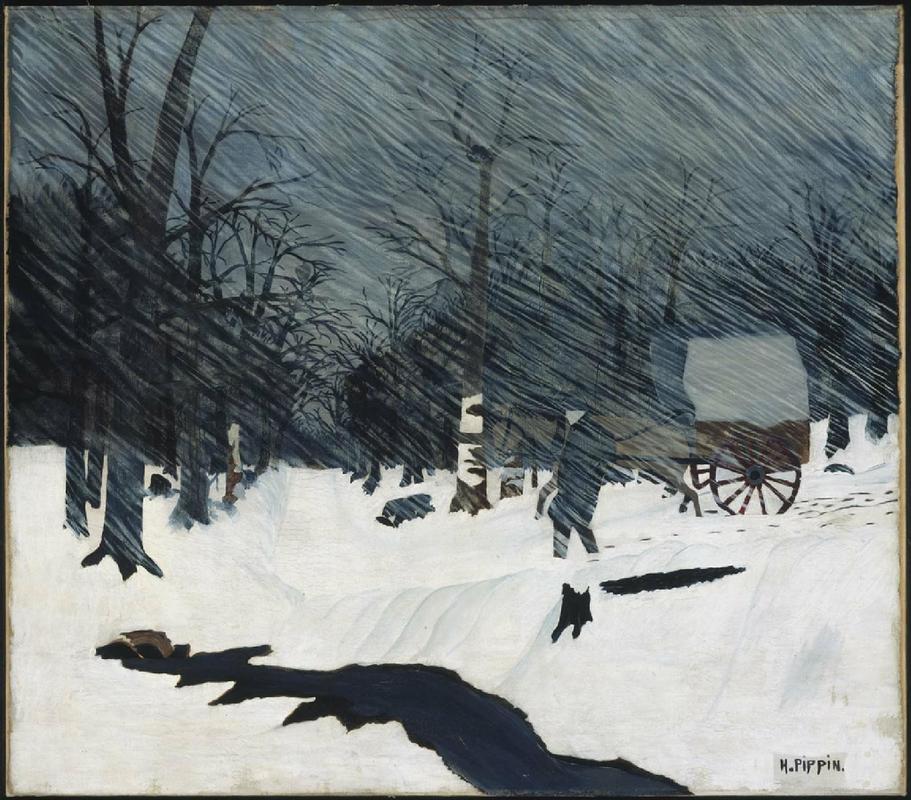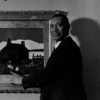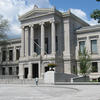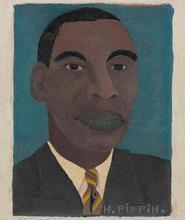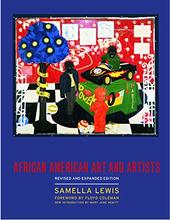More about Country Doctor (Night Call)
- All
- Info
- Shop

Sr. Contributor
If you’re considering going to art school, here’s a lesson from Horace Pippin’s book.
Interested in art from a young age, Pippin beat the odds and joined the ranks of self-taught artists who made names for themselves without putting a single day toward a BFA. Although these success stories are few and far between, quite a few artists you’ve heard of accomplished this feat. Both Vincent van Gogh and Frida Kahlo taught themselves how to paint. Interestingly, Pippin, van Gogh, and Kahlo all turned to art to help sort out traumas that impacted their lives. Pippin painted the experiences that shaped him, including his time fighting in World War I, the overt and systemic racism in the United States, and his childhood.
As the United States entered World War I, Pippin volunteered to fight in the all-black 369th Infantry Regiment, known as the Harlem Hellfighters. Caught by a German sniper’s bullets, he sustained injuries in his right shoulder and arm that later complicated his ability to paint. Although he experimented with alternative methods of artmaking and succeeded in making burnt-wood panels, painting remained Pippin’s first love. In a slow and painstaking technique that he developed over time, Pippin held a paintbrush in his right hand, using his left hand to grasp his right wrist and move the brush across the canvas. Once he found what worked for him, Pippin once again dove headfirst into his painting practice.
As a self-taught painter, Pippin’s process involved a lot of trial-and-error. For example, he originally painted the snowstorm in this work more of a gray color, which he ended up not liking. The original gray color for the snow surrounds the artist’s signature in the lower right corner of the canvas. Pippin also found inventive ways to communicate through the medium. He achieved the effects of a blustering snowstorm by laying thin washes of white paint across this canvas.
Pippin chose subjects that resonated with him, often painting both well-known and everyday heroes. He painted a portrait of Abraham Lincoln, as well as scenes from the Bible. Here, we see one of his more ordinary (yet no less important) heroes: the country doctor, who played a pivotal role in rural life. We could learn a lot from Pippin, who admired the tireless doctors who ventured out into the rain, sleet, or snow to serve the people of their communities. Today, rural America is experiencing a huge disparity in access to healthcare, and as many as one out of four people living in rural areas have recently gone untreated simply because there are no doctors or hospitals close enough to where they live.
Sources
- Mann, Jon. “8 Famous Artists Who Were Self-Taught.” Artsy. 25 May 2018. https://www.artsy.net/article/artsy-editorial-8-famous-artists-self-tau…
- Museum of Fine Arts Boston. “Country Doctor (Night Call).” Objects. https://collections.mfa.org/objects/34071. Accessed 19 June 2020.
- National Gallery of Art. “Pippin’s Story.” Lessons and Activities. https://www.nga.gov/education/teachers/lessons-activities/counting-art/…. Accessed 19 June 2020.
- Siegler, Kirk. “The Struggle to Hire and Keep Doctors in Rural Areas Means Patients Go Without Care.” Health Shots. National Public Radio. 21 May 2019. https://www.npr.org/sections/health-shots/2019/05/21/725118232/the-stru…
- Sullivan, Missy and Volker Janssen. “A Harlem Hellfighter’s Searing Tales from the WWI Trenches.” History Stories. 31 January 2019. https://www.history.com/news/harlem-hellfighters-horace-pippin-tales-fr…. Accessed 19 June 2020.
- The Phillips Collection. “Horace Pippin (1888–1946).” American Art. https://www.phillipscollection.org/research/american_art/bios/pippin-bi…. Accessed 19 June 2020.

